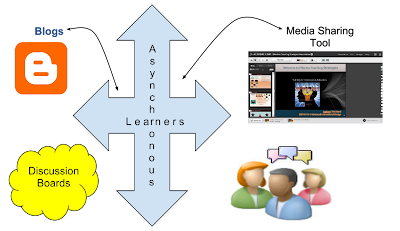Art and visual thinking have always fascinated me. Therefore, I decided to view some classes on visual thinking using art forms as displays. I used Open Culture (Open Culture, 2006-2012) to find some courses on visual thinking. One of the free classes I found interesting was Practice of Art 8-Introduction to Visual Thinking (UC Berkeley, 2011). This open course uses art to analyze by just looking at different types of artwork. The instructor engages learners and shares their viewpoint on many different artifacts.
This course has 10 lectures, and I reviewed most of them. As we know art work does not contain much words but it allows learners to use visual senses to interpret art. The classes gave a lot of informative information regarding the subject. It also displayed many interesting graphics, which aided to the learning. The instructor clearly understood the learner characteristics and how to apply the information to the learners (Albright, Simonson, Smaldino & Zvacek, 2000-2012). I think the media selection was also beneficial for asynchronous learners. The instructor used YouTube to display the classes. I think this is an excellent platform for learners. It is global and virtually used by many people. “Too often, instructors do not place enough emphasis on designing and using quality visual material” (p. 159). For this course, I can tell the instructor planned a good medium for the class. The media is clear and provide alternative viewing methods. Learners can share the video and place the embed code in a web document or blog. The audio was mostly clear. I did hear some noise and static during the videos, but this was minor. Most of all I think this course designer did plan for distance learning by using Web 2.0, multimedia designs, audio, and video.
Internet based distance learning has to engage learners and provide a medium that is welcoming to adult learners. There are people who have not experienced the wonderful world of cyber learning. Open courses provide free online courses for learners to be acclimated with an innovative way of learning. How can learners know if a course was pre-planned for distance learning? How can learners know if they are benefiting from cyber learning by using new technologies and online materials? Online courses should promote active learning by appealing the audience. Audio, graphics, video, and lectures should promote learning by the audience. The instructional designer has to provide an avenue of learning that is conducive to the learning audience this includes, designing and developing a module that includes a course management system or a forum for viewing materials such as YouTube, or Wiki sites. Open Culture provides a forum to review free courses using modern technology. Learners can experience the virtual world of learning and all of the benefits it has to offer.
References
Albright, M., Simonson, M., Smaldino, S., & Zvacek, S. (2000-2012). Teaching and learning at a distance foundations of distance education. (5th ed., pp. 150-192). Boston, MA: Allyn & Bacon.
Open Culture. (2006-2012). 500 free online courses from top universities. Retrieved from http://www.openculture.com/freeonlinecourses
UC Berkeley. (Producer) (2011). Practice of art 8 - lecture 1 introduction to visual thinking [Web]. Retrieved from http://youtu.be/n0jmaarz2RY



